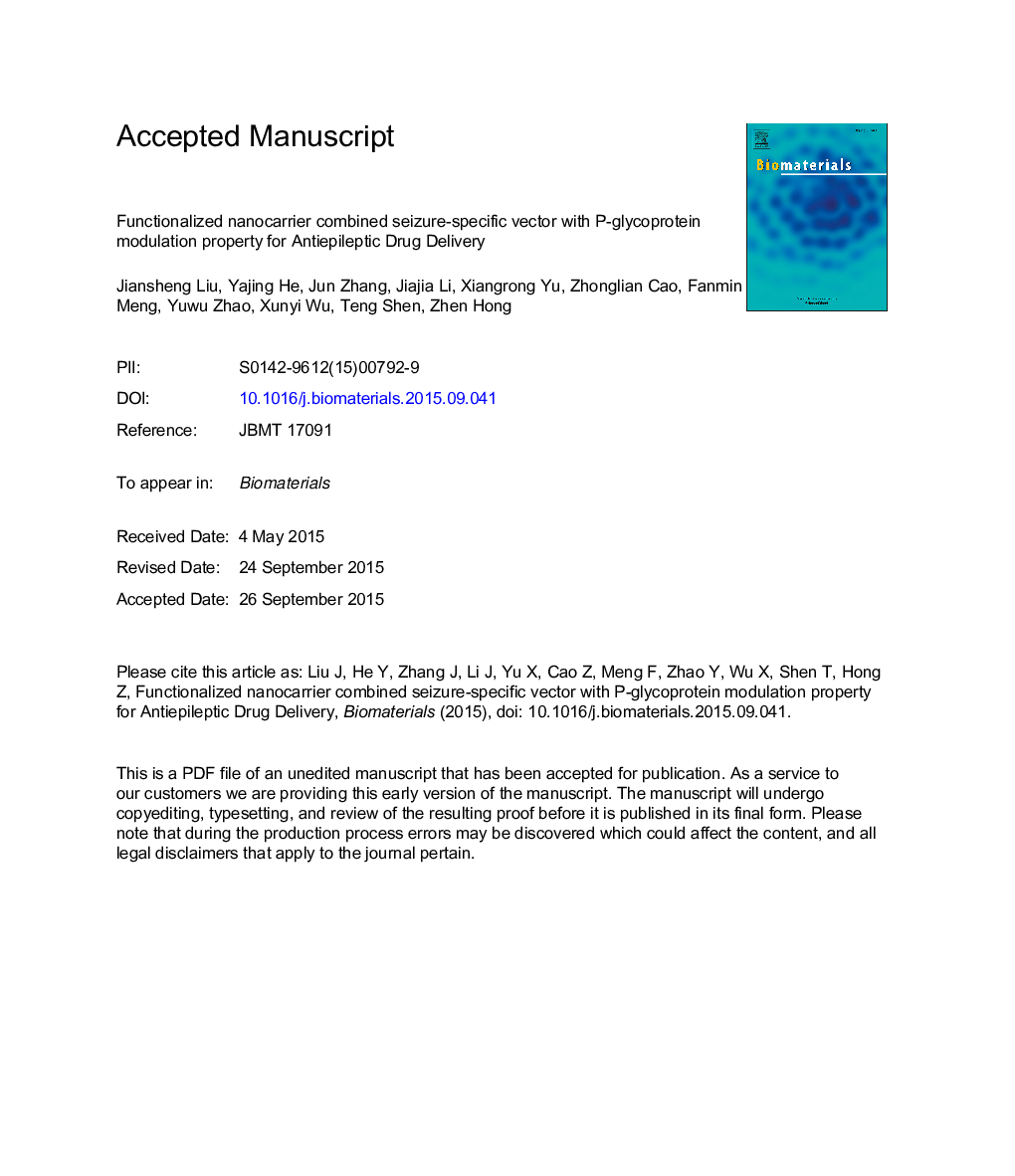| Article ID | Journal | Published Year | Pages | File Type |
|---|---|---|---|---|
| 6485374 | Biomaterials | 2016 | 52 Pages |
Abstract
Despite optimal therapeutic regimen with currently available antiepileptic drugs (AEDs), approximately a third of epilepsy patients remain drug refractory. Region-specific overexpression of multidrug efflux transporters at the blood-brain barrier, such as P-glycoprotein (P-gp), might contribute to multidrug resistance (MDR) by reducing target concentrations of AEDs. Therefore, development of nanomedicine that can modulate P-gp function as well as facilitate targeted AEDs delivery represents a promising strategy for epilepsy intervention. To achieve this, we sought to exploit the possibility of combination of active targeting function of tryptophan by transporter-mediated endocytosis and overcoming MDR by Pluronic block copolymers. Herein, a tryptophan derivate (TD) functionalized Pluronic P123/F127 mixed micelles encapsulating LTG (TD-PF/LTG) was developed to promote AEDs delivery to epileptogenic focus. TD-PF/LTG was about 20Â nm in diameter with a spherical shape and high encapsulation efficiency. A rat epilepsy model with pilocarpine was established to evaluate the brain penetration efficiency of the LTG-incorporated polymeric micellar formulation, compared with free LTG formulations. Studies showed that TD-PF/LTG was more efficient than PF/LTG as well as free LTG in delivering the drug to the brain, especially the hippocampus. The enhanced targeted delivery could be ascribed to the increased tryptophan uptake at epileptogenic focus as well as P-gp modulation property of the nanomaterial. Taken together, TD-conjugated Pluronic micelles showed promising potential as a nanoplatform for the delivery of AEDs in refractory epilepsy.
Related Topics
Physical Sciences and Engineering
Chemical Engineering
Bioengineering
Authors
Jiansheng Liu, Yajing He, Jun Zhang, Jiajia Li, Xiangrong Yu, Zhonglian Cao, Fanmin Meng, Yuwu Zhao, Xunyi Wu, Teng Shen, Zhen Hong,
